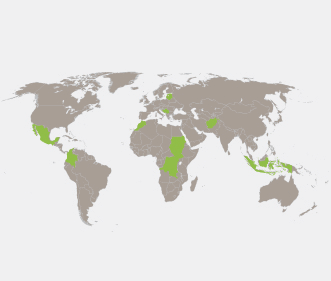Corruption in security sector reform (SSR) and peacebuilding is often acknowledged as a problem, but there is still a hesitancy to act on it. This is sometimes even due to the enduring notion that corruption is a necessary evil in securing peace. In addition to the hurdle of acknowledging corruption’s full impact on security, there is a capacity challenge of how to address it, as corruption is a highly political subject. This list of five readings is intended to demonstrate that corruption’s impact on security and peacebuilding cannot be ignored, as well as to provide some practical readings that can give practitioners and policy makers starting points to tackle the problem.
1. “Corruption: The Unrecognized Threat to International Security,” Sarah Chayes, Carnegie Endowment for International Peace, Paper, June 2014
As a broad overview this report makes the case that Western policymakers and businesses have overlooked corruption’s impact on international security. It goes on to show that corruption is not always a systematic failure in fragile states, but rather a functioning system that empowers certain elites. This system can also work with other security concerns, such as organized crime to exacerbate social grievances and create further instability. Based on first acknowledging these risks, Chayes then argues that policy makers can use appropriate tools to analyse countries at risk to make more informed decisions on if and how to engage, as well as how to mitigate risks.
2. “Corruption as a Threat to Stability and Peace, ” Mark Pyman, Tobias Bock, Eleanore Vidal de la Blanche, Saad Mustafa, and Dominik Zaum, Transparency International Germany, February 2014
This report is divided into three sections examining corruption in fragile contexts. It starts with providing an overview of the impact of corruption on conflict and stability. It next gives three cases studies of counterinsurgency in Afghanistan, the political deadlock and criminal entrenchment in Kosovo, and the corruption caused by trafficking in West Africa. The three case studies look at local dynamics as well as the effects of foreign influences on corruption. To this end, the final section looks at efforts made by international organizations and their peacekeeping and peacebuilding efforts to address corruption.
3. “Building Integrity and Countering Corruption In Defence and Security: 20 practical reforms,” Mark Pyman, Transparency International UK, February 2011
This handbook is excellent as a practical document. It contextualizes corruption to security in a highly understandable manner, and provides clear examples of measures that can be taken to address the problem. Notably the handbook provides a matrix of corruption risks in defence (an additional report provides a risk matrix for police “Arresting Corruption in the Police: The global experience of police corruption reform efforts” [2012]). The matrix is divided into five main categories of risk: political, finance, personnel, operations, and procurement. The handbook provides examples of tangible exercises and projects to address these categories as well as how to diagnose corruption risks and lead change. This includes suggestions on how to discuss corruption with defence leadership, an outline of an integrity building course, and guidelines for preventing corruption in procurement.
4. “Putting Governance at the Heart of Security Sector Reform: Lessons from the Burundi-Netherlands Security Sector Development Programme,” Nicole Ball, Clingendael, March 2014
While not discussing corruption directly, this mid-term evaluation of an innovative eight year program reveals interesting lessons about how to address one of the biggest challenges of SSR: the political component. Notably, the program has no results framework, but rather uses a flexible iterative approach with multiple programming phases. This allows the program to adapt to changing dynamics. The program directly addresses the political component of reform through dialogue at all levels of government and tracks progress daily. While there are still challenges ahead such as political will at the highest levels of government, Ball found that the program strengthened a breakdown of security-sector secrecy, gave a space for dialogue, and increased inclusivity.
5. “The Costs of Security Sector Reform: Questions of Affordability and Purpose,” Bernard Harborne, Sustainable Security. April 2014
This is a short piece by Harbone that focuses on what he sees as a part of SSR that is often referred to as important, but rarely addressed: financing. Harbone cites examples in Liberia, Niger, and Somalia where questions were raised on the affordability of peacebuilding and security operations. This allowed for perspectives on new approaches to security and peace problems. Harborne admits that a challenge in discussing affordability is the secrecy of security budgets in many countries. But he lists three benefits of looking at peacebuilding and SSR from a finance perspective. First, it would create unified voices for foreign donors. Second it would lead to greater transparency and use of scarce national resources. Finally it would allow honest examinations of illegitimate security sector revenue sources and what it would take to cut these off.
James Cohen is a security sector reform consultant specializing in governance and anti-corruption. He has written on the subject, conducted program design, and provided capacity building and awareness raising for various government staff, international organisations, and civil society. He draws his experience from working for the Geneva Centre for the Democratic Control of Armed Forces and Transparency International UK’s Defence and Security Programme.
Tags: corruption, governance, SSR






 Visit the Centre for
Visit the Centre for